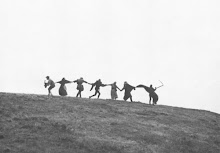? - September 30, 1888: Age unknown
Elizabeth Stride was born in Sweden, and worked there as a domestic servant and a prostitute before coming to London in the late 1860s. There she met and married carpenter John Thomas Stride. The marriage seems to have lasted 10 or 15 years, but the couple were definitely separated when Stride died in 1884. During the 1880s she took in sewing and did domestic work, with some prostitution on the side to supplement what must have been a tiny income. She had been arrested a couple of times for drunk and disorderly behaviour, but overall was described as having a calm temperament and was liked by her friends.
 Catherine Eddowes (right) had a more difficult life. She had had a couple of children by a common-law husband, but had left the family due to severe drinking problems. She had a boyfriend, with whom she went out into the country to do harvest work; they had just returned to London and were broke. At 8:30 on the evening of her death she was arrested by police for public drunkenness; once the pubs had closed they released her, thinking she would go home.
Catherine Eddowes (right) had a more difficult life. She had had a couple of children by a common-law husband, but had left the family due to severe drinking problems. She had a boyfriend, with whom she went out into the country to do harvest work; they had just returned to London and were broke. At 8:30 on the evening of her death she was arrested by police for public drunkenness; once the pubs had closed they released her, thinking she would go home.Around 1:00 in the morning on Sunday September 30, a steward of a club in Whitechapel (a district of London) drove his cart into a square and discovered a woman's body. It appeared that she had just been murdered, as blood was still gushing from her slashed throat. This was Elizabeth Stride.
Meanwhile, about a 20 minute walk away, police were releasing Catherine Eddowes from custody. She walked to the poorly lit Mitre Square, about a ten-minute walk from the Bishopsgate Police Station. At 1:44 a police constable discovered her second body lying in Mitre Square. This time, the murder had not been interrupted. Although, like Stride, she had been killed quickly with a slashed throat, her body had been horribly disfigured and mutilated after death. It was determined she had died about 15 minutes before her body was found; thus about 30 minutes after Elizabeth Stride. They were the 3rd and 4th victims of Jack the Ripper, the only two to be killed on the same day. It is thought that because the murder of Elizabeth Stride had been interrupted, the killer had sought a second victim to meet his needs.
People who feel compelled to kill multiple victims, secretly, in a cruel manner seem to have always been part of humankind, but industrialized society, with the technology to communicate forensic information and public alarm, has given the phenomenon a public face. Jack the Ripper was not the first serial killer by any means, but he was the first one whose name became known worldwide. He was never caught.
Sources: Find-a-Grave (1) and (2), Wikipedia. I am not providing the links to the Wikipedia article as they show autopsy photographs, which you may not like to see.

































